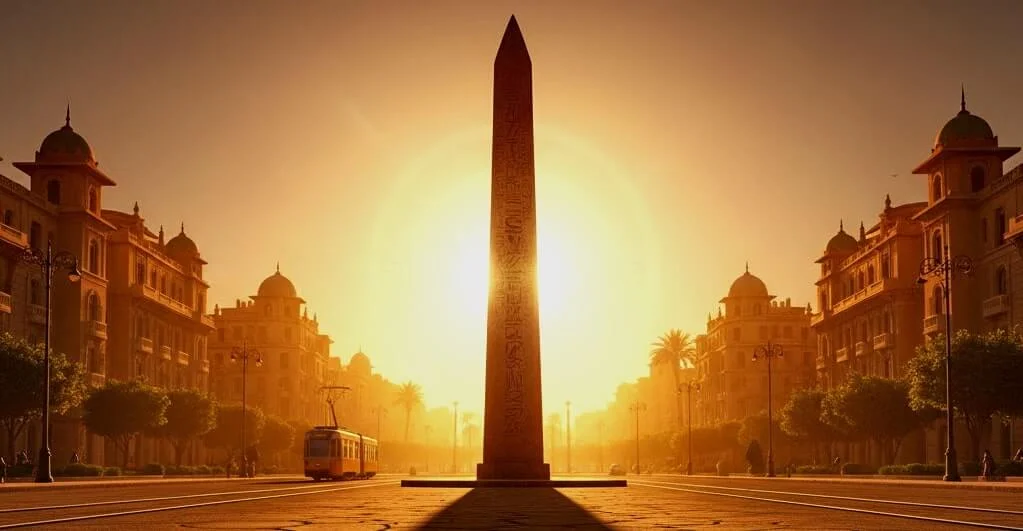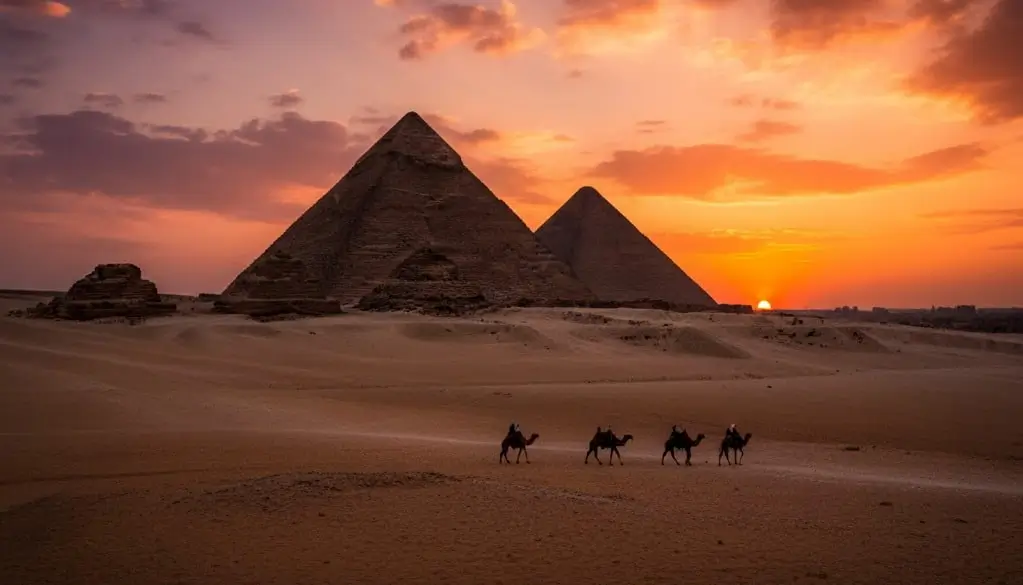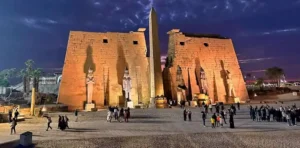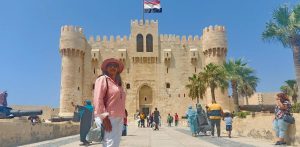The Pyramid Road, which locals call El-Haram Street, is Giza’s oldest street. The last ancient Egyptian king, “Pharaoh Nektanebu II,” established it in the 4th century B.C. He created a tree-lined avenue that led to the Giza pyramids, where he could find his grandfather’s tombs from the 4th dynasty.

El-Haram Street or The Pyramids Road runs from a location near the river channel – today’s Giza square – to the city’s closest desert, the Giza desert, in the middle of the rich area of the Nile’s western bank. They call the pyramids the Giza Pyramids because they are on the west bank of the Nile River in the Giza governorate.
El Hram Street History
Alexander the Great invaded Egypt and established Alexandria as his capital. He didn’t care for Cairo or Giza, which is why he didn’t touch El-Haram Street of the pyramids, and even his leader Ptolomy, when he ascended the Egyptian kingdom, didn’t add to El-Haram Street. And the road remained a tree avenue leading to the tombs of the ancient Kings.

In 641 A.D., the Arabs conquered Egypt and built the city of Foustat as the Egyptian capital, complete with a large mosque known as Amr Ibn El-Aas on the Nile’s eastern bank. When the Fatimids established their capital in Cairo, it was likewise on the Nile’s eastern bank. Giza and El-Haram Street remained unchanged as a result, except for the private additions.

During the Ottoman Era
Rich Pachas erected lovely villas and luxury residences and buildings along the avenue throughout the Ottoman period, transforming it into a thoroughfare with buildings on both sides. Between world wars, the development of new structures on the Boulevard proceeded until 1952, when the Egyptian Revolution of the Free Officers occurred.

After the 1952 revolution, the government began nationalizing these structures. As the country’s population grew, they sold most of these structures to individuals. These new owners converted them into businesses to make money, primarily nightclubs and cabarets for belly dancing. The Boulevard is famous for its belly dancing and nightclubs. It is known throughout the Middle East. It attracts visitors from all over the world. They want to see Egyptian belly dancers.
Vibrant Nightlife
Every year, El-Haram Street becomes a bustling hub of activity. It is in Giza. Visitors from the Arab Gulf region are particularly attracted to it. These men are drawn by the vibrant nightlife. They seek out performances by belly dancers and companionship with night girls. The atmosphere is charged with excitement. Rhythmic beats of traditional music mix with laughter and conversation. This creates a captivating scene. It epitomizes the area’s allure.
Prostitution is officially illegal in Egypt. The demand for it persists. Many men are not deterred by the legal constraints. El-Haram Street is close to the iconic Pyramids of Giza. This proximity adds a sense of mystique to their escapades. They indulge in the rich cultural heritage while pursuing their desires. The allure of the streets is about more than physical companionship. It is also about experiencing a different culture. It provides a temporary escape from daily life.
An intoxicating environment
As they navigate through the neon-lit avenues, the men often find themselves immersed in a world that contrasts sharply with their more conservative societies. Here, the vibrant colors, enticing aromas, and tantalizing melodies create an intoxicating environment where they can explore their fantasies. The belly dancers, with their mesmerizing movements and captivating performances, draw crowds, while the night girls offer a glimpse into an experience many may only dream of back home.
While the dynamics of this underground scene may be complex, it reflects a broader narrative about desire, cultural exchange, and the pursuit of pleasure in a place steeped in history and tradition. The paradox of seeking out something deemed illegal only adds to the allure, making El-Haram Street a focal point for those looking to explore the intersection of culture, freedom, and escapism in a city that is both ancient and modern.

The Mena House Hotel
The street is 7.5 kilometers long and runs east-west. The Mena House Hotel, located near the entrance to the Giza pyramids, is one of the neighborhood’s most well-known attractions. Egyptian ruler Khedive Ismael formerly built the structure as a palace when he decided to throw a great party to commemorate the Suez Canal’s inauguration and invite all of Europe’s kings and queens. However, he erected that palace specifically for the princess of France, “Eugenie,” because he adored her.











